STAR TRADING E14 LED Lamps
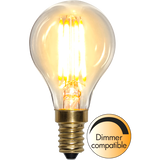
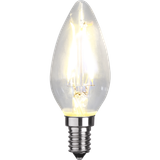
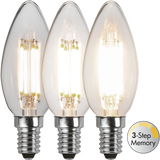



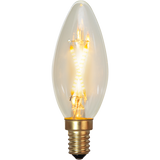
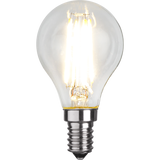
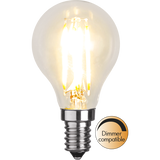
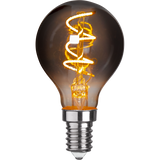

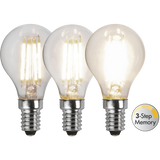
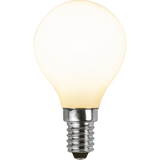
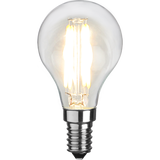
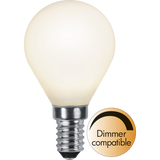
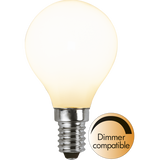
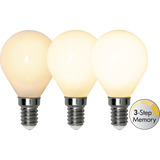
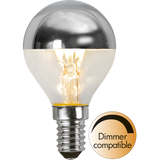
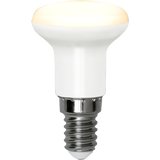
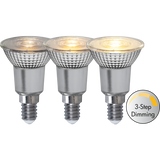
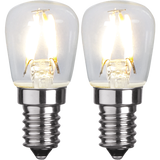

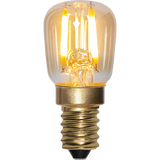

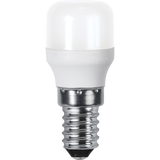

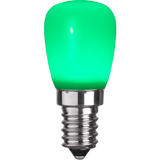
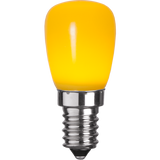

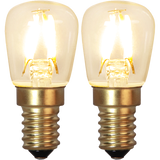

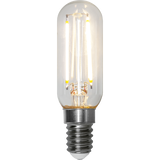
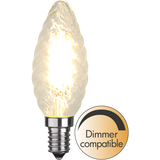

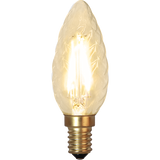

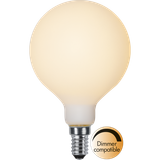
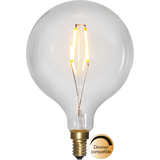
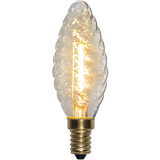


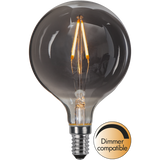

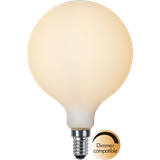


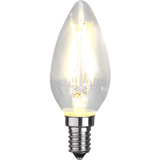
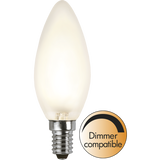

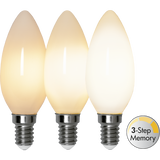

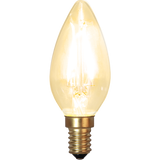



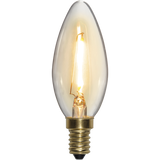
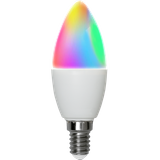

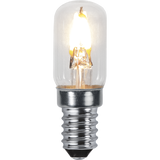
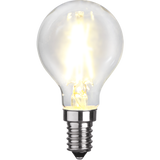
-
-
1
- 2
-
star trading e14 led lamps formats and outputs
E14 covers chandeliers, sconces, bedside heads, and slim glass chimneys. Expect C35/B35 candles, P45/G45 mini-globes, and short tubulars. Typical nodes: 2–3 W ≈ 200–300 lm for decorative arms, 4–5 W ≈ 350–500 lm for bedside and mirrors, 6–7 W ≈ 650–800 lm where ceilings are higher. Colour sets: 2700 K/3000 K/4000 K. Baseline CRI 80; project lots with CRI 90 (often R9 > 50) are stocked for skin tones, timber, and textiles. Pro batches aim for PF ≥ 0.90 (from ~5 W), THD ≤ 15 %, surge 1–2 kV (L-L), and low-modulation light (PstLM ≤ 1.0, SVM ≤ 0.4). Ambient −20…+40 °C; mark “enclosed-fixture suitable” if shades run hot and keep Tc under 85 °C.
star trading e14 led bulbs optics and envelopes
Two engine styles, each with a clear use case. Clear filament glass gives point-source sparkle and higher centre intensity—perfect in visible crystal and open arms. Opal ceramic-core lamps flatten luminance for comfort in close sightlines and mirrors while holding flux at elevated Ta. Envelope guides: C35/B35 ≈ Ø35×98–110 mm; P45/G45 ≈ Ø45×78–85 mm; short tubes sit below cut edges in tiny shades. Caps follow IEC 60061; collars are ceramic or high-temp polymer on higher watt nodes.
star trading decorative e14 lighting series map
- Filament Décor — clear/amber/smoked candles and mini-tubes; authentic warm ambience at 2700 K; CRI 90 options for front-of-house.
- Opal Utility — P45/G45 for corridors and guestrooms; best lm/W and thermal headroom in enclosed shades; available in 3000/4000 K.
- Mini High-Output — compact 6–7 W pieces around 700–800 lm when you need punch without changing the fitting.
- Tinted Accent — gentle amber/smoke for period schemes; lower peak lm by design, very forgiving in direct view.
star trading dimmable e14 lamps drivers and control
Trailing-edge (RC) is the safe default for smooth low-end; many SKUs also pass leading-edge (RL) tests but can buzz on tiny loads. Clear filaments typically dim ~5–100 %; opal types ~10–100 % when the plate load sits in the dimmer’s stable window. Aggregating small channels stabilises the bottom end; a single 3–4 W lamp per dimmer circuit is where shimmer starts. Document RC/RL and minimum level on drawings—mixed floors are where commissioning gets noisy.
Technical references that actually help
EN/IEC 62560 (self-ballasted safety/marking), EN 62031 + IEC 62384 / EN 61347-2-13 (source/driver), EN 55015/EN 61547 (EMC), EN 61000-3-2/-3-3 (mains quality), EN 62471 (photobiological safety). Source data references LM-80 with TM-21 life projections—expect L70/L80 in the 25–50 kh band at Ta 25 °C depending on engine and thermal path.
Applications and quick picks
Chandeliers and crystal arms: clear C35 at 2700 K, 200–300 lm, CRI 90 for true skin/wood tones. Guest corridors: opal P45 at 3000 K, 350–450 lm to keep luminance comfortable at eye level. Mirrors and bedside: opal mini-globes at 4000 K where task clarity matters. For compact multi-arm fixtures, the spec sheet often labels these star trading small base led lamps—note envelope height so lamps don’t protrude past the shade.
Fitment and heat behaviour
Use holders rated ≥ T150 in enclosed cups. Keep fabric/insulation off the crown; elevated Tc shortens life and can nudge colour on CRI-90 bins. In metalware, insulating washers preserve creepage/clearance. Short-body variants solve shallow chimneys and heritage trims without changing the fitting.
Compatibility and retrofit notes
Lamp-only change-outs are common—room lists tend to say star trading e14 retrofit bulbs. Mirror the wording, then lock five items in one line: envelope, watt/lumen node, CCT/CRI, dimmer type (RC/RL) and “enclosed-OK” Y/N. That prevents site swaps and keeps maintenance stock clean.
Energy and fleet picks
For estates chasing kWh, steer buyers toward high-lm/W opal utility pieces; they land the lowest W per lux in shaded fittings. Many tenders still search star trading energy efficient e14 lights—pair that request with PF ≥ 0.90 nodes and publish maintained lumens at raised Ta; that’s the honest comparison.
Selection checklist for planners
- Photometry: lumen target by room, plus luminance intent (clear sparkle vs opal comfort).
- Colour policy: 2700 K dining; 3000 K public rooms; 4000 K task/mirror. Pin CRI/R9 where materials matter.
- Dimming: plate topology (RC/RL), minimum level, and aggregate load per channel.
- Geometry: envelope length vs throat/shade; short-body where needed.
- Thermal: enclosed-use label, holder T-class, airflow around the crown.
- Logistics: standardise one clear + one opal per zone so spares don’t drift across floors.
Procurement lines that avoid re-picks
Write each item as: envelope + cap + W/lm + CCT/CRI + dimmer note + enclosed-OK + surge class.
Example: “C35 E14, 4.5 W 420 lm, 2700 K CRI 90, RC dim, enclosed-OK, 2 kV.” Add finish/tint only where the lamp is visible in the scene.
Bankoflamps B2B
We align envelopes, lumen nodes, CCT/CRI, dimmer topology, holder T-classes, and “enclosed-OK” notes to your room schedules. Live EU stock by warehouse; quotes land in about an hour with EAN/MPN, PF/THD, flicker data, and accessory codes. Orders go by manufacturer code; you get dated price lists, lead-time tracking, and consolidated shipments by zone across France, the Baltics, Germany, Spain, Italy, Belgium, and the Netherlands. Post-payment up to 30 days is available for approved accounts.